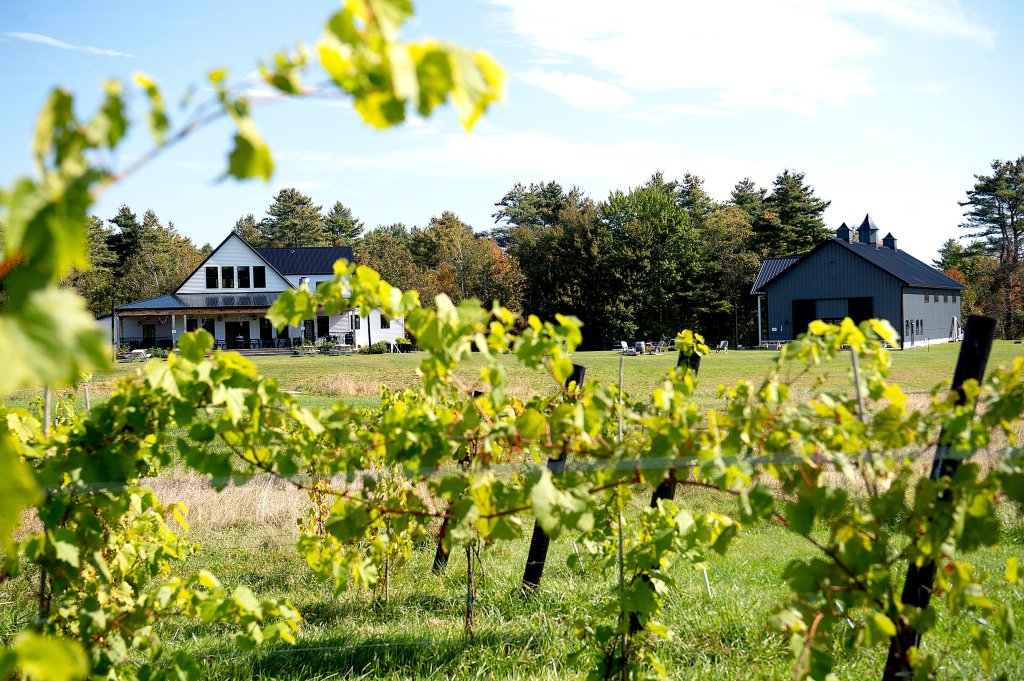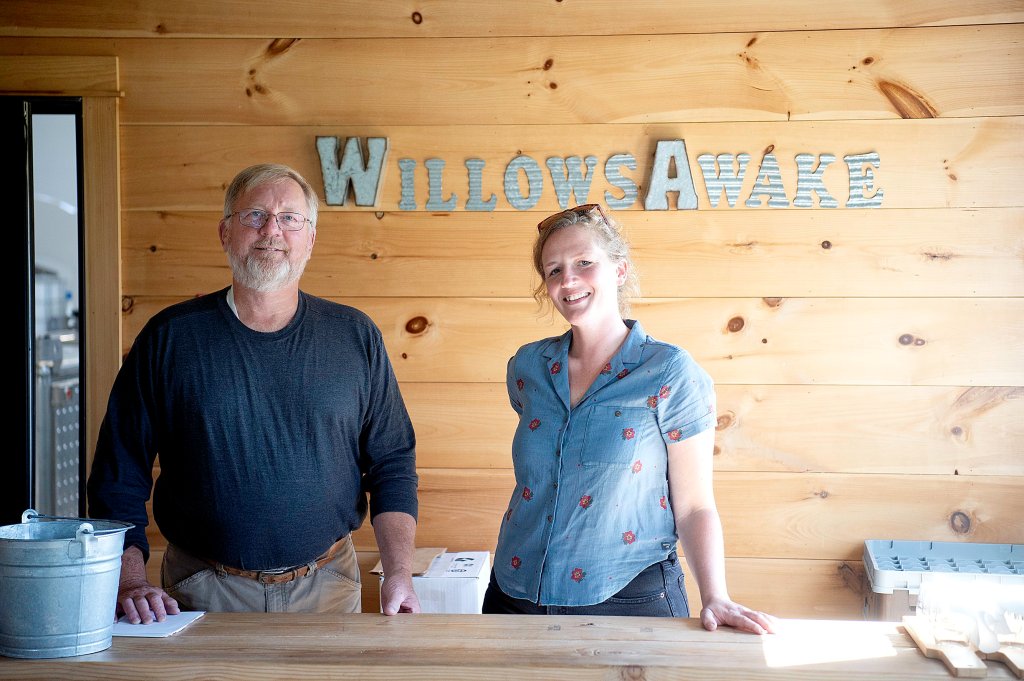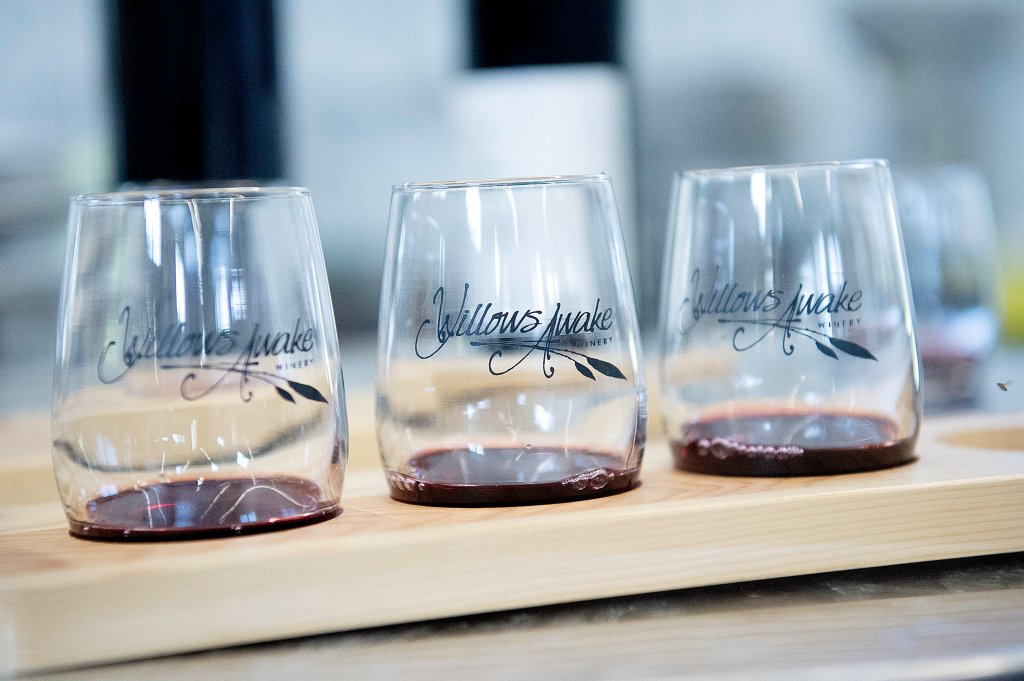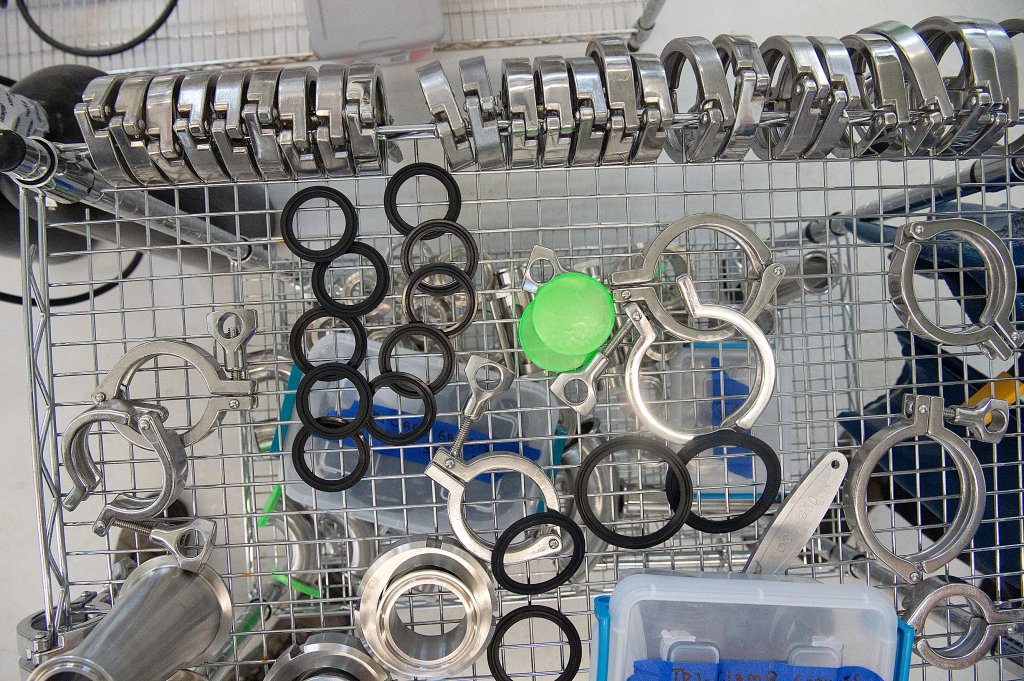LEEDS — Winemaking in Maine is still in its infancy, but a few dedicated winemakers are changing the landscape of what was once thought of as too cold a climate for winemaking grapes.
“So there’s Cellardoor that’s doing grape wine, Oyster River is doing grape wine, there’s some other smaller producers that just do a small amount. And there’s us.” said Tony Lyons, as he explained the winegrowing landscape in Maine. He was referring to Cellardoor Winery in Lincolnville and Oyster River Winegrowers in Warren.
Lyons and his wife, Brenda, own and operate WillowsAwake Winery and No. 10 Eatery on nearly 70 acres of farmland transformed into a scenic vineyard and seasonal wedding venue in a pastoral setting.
With a hint of an Australian accent, Lyons and his new winemaker, Lindsay Benson, explain the lay of the land, less than two weeks after their first harvest together as a team.
Most wines produced in Maine today are still made from fruit other than grapes — like blueberry, cranberry and apple, although that is changing. Maine’s cold climate was long considered too cold for most European varieties like the traditional vinifera grapes, and that’s where hybrid grapes come into play.
Hybrids like Itasca, Frontenac, Marquette and Clarion were developed by the University of Minnesota’s cold-hardy grape breeding program, recognized as one of the top wine research programs in the country. Most other hybrids were developed at Cornell University and other research centers.
Hybrid grapes are able to withstand temperatures as low as minus 25 degrees or colder, and are also disease resistant, making them a great choice for northern climes and opening the door to winemaking in northern states beyond using Concord and Niagara grapes.
Hybrids have been embraced by winemakers in northern states like Vermont, New Hampshire, New York and Maine, including WillowsAwake Winery in Leeds. Lyons and his team are turning one of the best hayfields in the area into neatly planted rows of cold-hardy grapes.
“There are about 50 licensed wineries in the state,” said Lyons, who is also president of the Maine Winery Guild, “only about 10 are actually concentrating on grape wines. The rest are doing fruit, and that’s how the industry started. But that’s one of the things that we’re trying to have people realize about the wine industry, it’s not fruit anymore.”
WINEMAKING TAKES PATIENCE
Patience and winemaking go hand-in-hand, because it is an undertaking you need to have a passion for and the means to invest in. That’s exactly what Lyons has done at WillowsAwake Winery, investing in the land, grapevines, an experienced winemaker and the infrastructure to make it all happen.
They planted some 4,200 vines on eight acres in 2018, with a smaller plot of vines in nearby Auburn planted in 2012. It takes four to six years for grape vines to reach true yields, says Benson, the new winemaker at WillowsAwake.
“So, I think we’re still in that establishment preliminary stage,” she offers, referring to the young vines. “And hopefully next year we’re going to see a significant jump in the volume that we get out of the vines.”
Benson studied in France, obtaining two advanced degrees in international business and oenology and viticulture and has worked at vineyards in France, Australia, Oregon, Vermont and Maine.

Winemaker Lindsay Benson grabs a few glasses from the tasting room at WillowsAwake Winery in Leeds to sample this year’s harvest. Daryn Slover/Sun Journal
Benson, who grew up in Brunswick, has just notched her first year at the Leeds vineyard, and says it’s been quite an experience. “The growing season was a challenge, but I think for me being my first year in a management position in the vineyard, it was hard, and I would have loved to have a gangbuster year in my first year, but it also taught me a lot.”
A hard freeze in early May saw the temperature dip to 22 degrees, wiping out a significant portion of the early-budding Itasca grapes, impacting this year’s harvest.
“With every crop, the vulnerability is always in the spring, with the potential for frost,” Lyons said. “The freeze is the real major surprise, so that’s the biggest concern.”
Climate change may actually help the budding wine industry in states like Maine with milder winters and warmer temperatures predicted. “I’m still anticipating that we’ll get wide temperature swings in the wintertime,” Lyons added, “so we’ll be able to tolerate those (temperature swings) with these vines.”
One hybrid in the vineyard, Petite Pearl, buds out later than the Itasca and Marquette, making it less vulnerable to a freeze.
This year, WillowsAwake Winery expects to put up 2,500 cases of wine with anticipation building for next year’s harvest. “Hopefully next year we’re going to see a significant jump in the volume that we get out of the vines,” Benson said.

Spring Peeper is a white wine from WillowsAwake Winery in Leeds, It’s typically bottled in early spring and is named after spring peeper frogs who herald the start of spring. Daryn Slover/Sun Journal
ESTATE GROWN WINES IN WEST-CENTRAL MAINE
With more than 4,300 wineries, California produces an estimated 85-90% of the wine in this country. The development of hybrid grapes has helped states like Michigan grow its winemaking prowess: it now boasts nearly 200 wineries and is known for its ice wine, a sweet, late-harvest dessert wine that until recently was only produced in a few places in the world.
According to Grist.org, Michigan’s wine industry is valued at $5.4 billion and directly creates 28,000 jobs and is growing.
Closer to home, New Hampshire has about 30 wineries, while Vermont has about two dozen and both states have viticulture research programs at their respective state universities that provide valuable support to commercial wineries, something the University of Maine currently does not have. Tony Lyons says winemakers in those states not only have the educational resource, but support of the state government.
“That’s something that Maine lacks is government support for the industry as a whole,” Lyons said, pointing out that the state does a great job promoting the potato, blueberry, lobster and beer industries, but not wine. “That’s really what I think has catapulted Vermont and New Hampshire ahead is that interest at that level,” he said.
With this year’s harvest completed and the fermentation process in its final stages, the wines are left to mellow in stainless steel tanks until bottling.
The winery is a purpose-built structure with ample room to grow, and it holds all the stainless steel tanks and sparkling new equipment Lyons invested in before moving into the new production facility over the last year.
“Tony’s really given me a lot of freedom here in creating multiple systems and setting things up in a way that I think will be most functional for us,” Benson says, explaining what’s inside the massive heated barn that also houses the tasting room.
Down the center of the building is a slot drain, specifically designed for winery operations. “You don’t really see this very often in the state,” Benson explained. “We have a great wastewater system where we can get irrigation quality water out the other end, so, this was ready to go as a wine drain.”
Cleanliness is paramount to winemaking and the system in place at WillowsAwake allows them to keep everything clean without wasting water. “They use a lot of water to make beer. “We use a lot of water to clean,” Lyons explained. “We don’t add water to wine. This is sort of the first rule, it’s kept to make sure that it’s clean.”
The taste of hybrid wines is best described as lighter and lower alcohol content than that of European varietals. You won’t get the full-bodied taste of a Cabernet Sauvignon from Marquette grapes. They also tend to be a little more acidic.
WillowsAwake Winery has traditionally offered five reds, four whites, one rose and an apple wine. The names have a story attached, for example, Rustic Romance is a 50-50 blend of Marquette and Frontenac grapes and is an homage to Tony and Brenda Lyons’ blended family and serves as a reminder to keep them grounded and not lose sight of why they started down this path.
Crickets is the name of a new fortified wine made from Frontenac Noir that’s being released soon for the holidays. Crickets, Lyons says, are a sign that fall is coming, winter is coming and it’s a sign of good luck. If you like port wine, you’ll love Crickets, which is smooth and boozy and has a fruity finish.
It’s also a testament to experienced winemaking. When a batch of Frontenac didn’t come out the way it was intended, it was distilled into a grape spirit, batched and added back to Frontenac, with the end result a special fortified wine.
Bottling of this year’s harvest will happen over the winter and perhaps into spring. WillowsAwake is working with distributors to make their wines available in Maine and beyond and they are looking into the possibility of direct shipping. For now, the wines are available in the restaurant and tasting room.
“What’s really exciting for me is that the wine industry here, there’s really no tradition that we’re adhering to — like we have to only do grapes, or we can only do cider we can only do blueberry wine,” Benson, the winemaker, said with a smile. “Now, we can kind of co-ferment, experiment and see — you know — what comes out of it at the end of the day.”
Send questions/comments to the editors.










